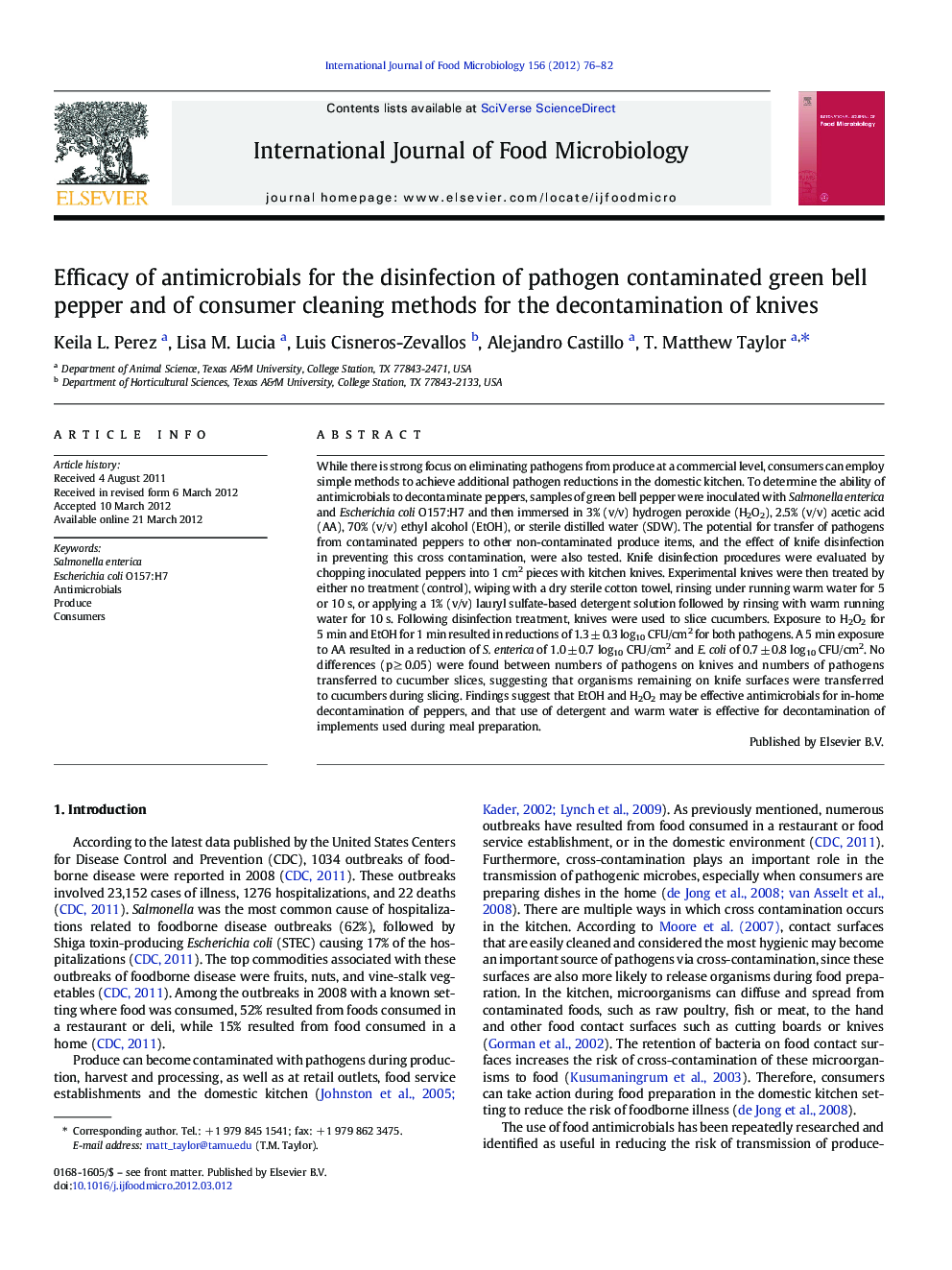| کد مقاله | کد نشریه | سال انتشار | مقاله انگلیسی | نسخه تمام متن |
|---|---|---|---|---|
| 4367806 | 1616647 | 2012 | 7 صفحه PDF | دانلود رایگان |

While there is strong focus on eliminating pathogens from produce at a commercial level, consumers can employ simple methods to achieve additional pathogen reductions in the domestic kitchen. To determine the ability of antimicrobials to decontaminate peppers, samples of green bell pepper were inoculated with Salmonella enterica and Escherichia coli O157:H7 and then immersed in 3% (v/v) hydrogen peroxide (H2O2), 2.5% (v/v) acetic acid (AA), 70% (v/v) ethyl alcohol (EtOH), or sterile distilled water (SDW). The potential for transfer of pathogens from contaminated peppers to other non-contaminated produce items, and the effect of knife disinfection in preventing this cross contamination, were also tested. Knife disinfection procedures were evaluated by chopping inoculated peppers into 1 cm2 pieces with kitchen knives. Experimental knives were then treated by either no treatment (control), wiping with a dry sterile cotton towel, rinsing under running warm water for 5 or 10 s, or applying a 1% (v/v) lauryl sulfate-based detergent solution followed by rinsing with warm running water for 10 s. Following disinfection treatment, knives were used to slice cucumbers. Exposure to H2O2 for 5 min and EtOH for 1 min resulted in reductions of 1.3 ± 0.3 log10 CFU/cm2 for both pathogens. A 5 min exposure to AA resulted in a reduction of S. enterica of 1.0 ± 0.7 log10 CFU/cm2 and E. coli of 0.7 ± 0.8 log10 CFU/cm2. No differences (p ≥ 0.05) were found between numbers of pathogens on knives and numbers of pathogens transferred to cucumber slices, suggesting that organisms remaining on knife surfaces were transferred to cucumbers during slicing. Findings suggest that EtOH and H2O2 may be effective antimicrobials for in-home decontamination of peppers, and that use of detergent and warm water is effective for decontamination of implements used during meal preparation.
► Antimicrobials (p < 0.05) reduced Salmonella and E. coli O157:H7 on peppers.
► Use of detergent inhibited transfer of pathogens from cutting knives to produce.
► Acetic acid, H2O2, and ethanol were effective in reducing pathogens on peppers.
► Knives can transmit pathogens between contaminated and non-contaminated produce.
Journal: International Journal of Food Microbiology - Volume 156, Issue 1, 1 May 2012, Pages 76–82